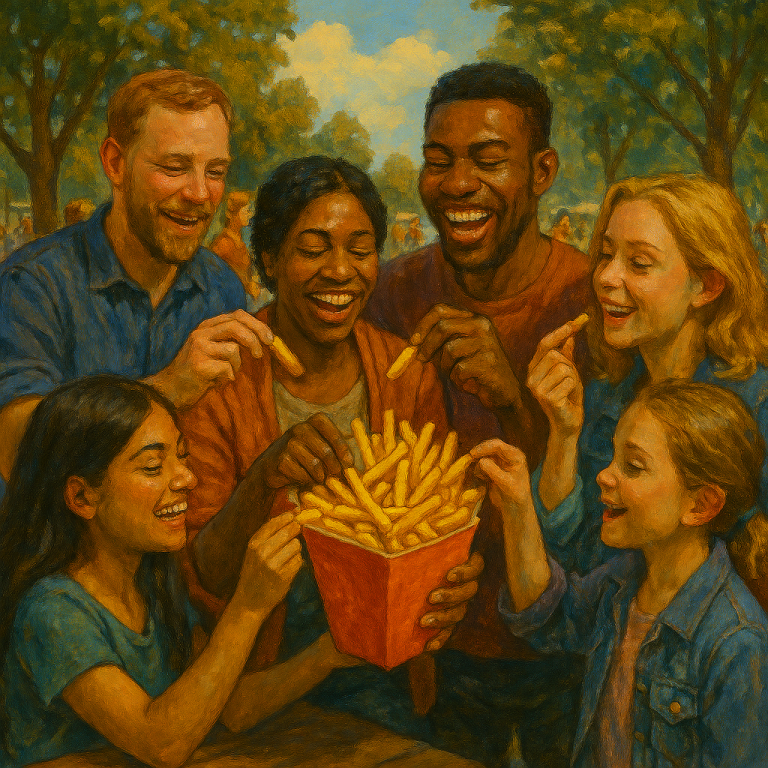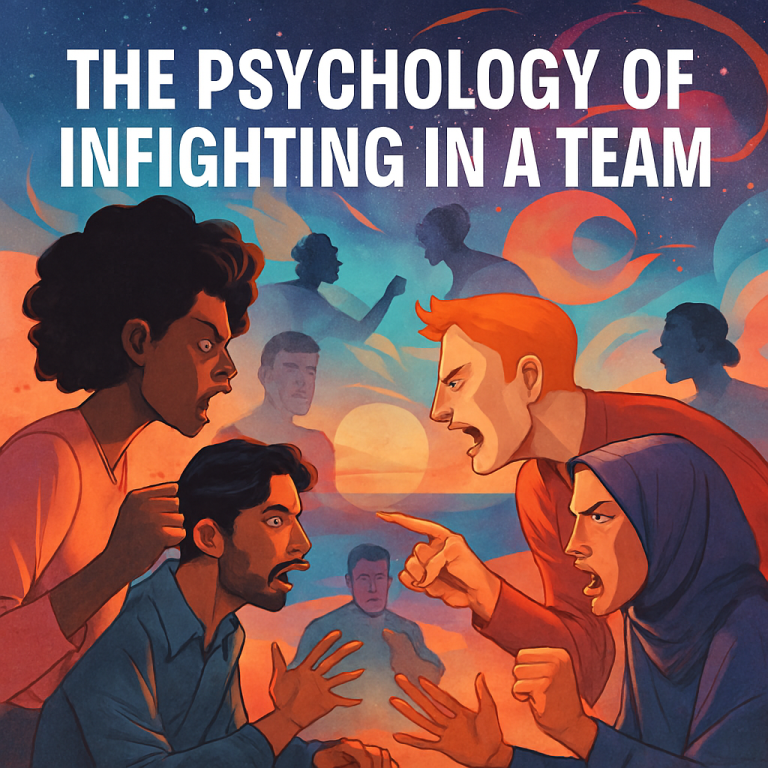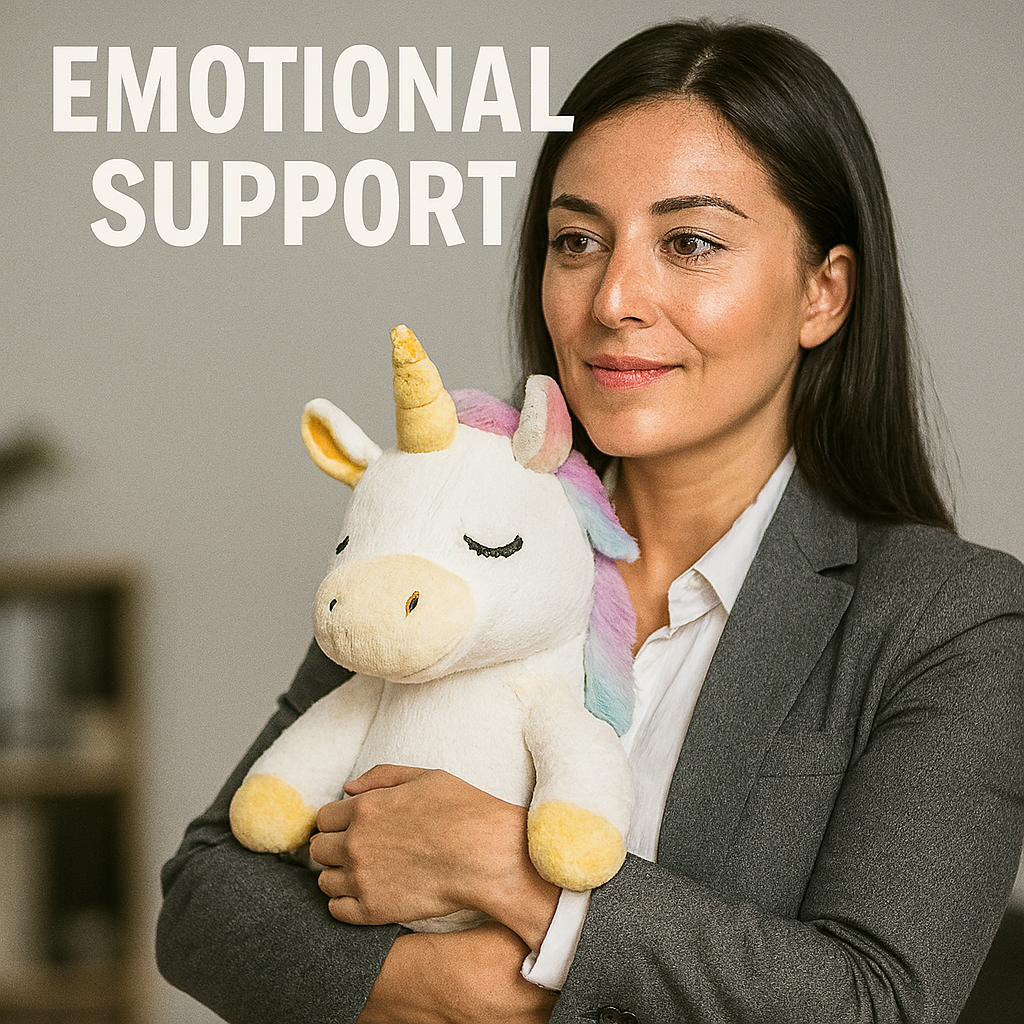
Plush Toy Friend For People
Not A Shameful Act – Confronting Stigma And Demanding Respect
Using an emotional support plush toy is not childish, not pathetic, and not something to laugh at. It is a direct, intentional act of survival and self-preservation. When someone reaches for a plush companion in the middle of a panic attack, during a sleepless night, or while reliving trauma, they are not weak — they are fighting back against the crushing weight of mental illness. To mock that is to mock resilience itself. Society has long been poisoned by the idea that vulnerability equals weakness, especially for men, veterans, and people living with disabilities. That toxic narrative has destroyed lives, silenced voices, and left countless individuals suffering in isolation. Emotional support is not a luxury; it is a necessity.
Plush toys are not toys in this context — they are lifelines, anchors, and tools of recovery. Every sneer, every dismissive laugh, every cruel comment reinforces stigma that keeps people from seeking help. That stigma kills. It drives people deeper into shame, further away from healing, and closer to despair. Choosing comfort, choosing softness, choosing something that helps you survive is not shameful — it is defiance. It is courage. It is a refusal to let trauma win. This is not about childishness; it is about humanity. And humanity demands respect.
This is not and never will be a Shameful Act
- Not childish — it is survival
- Not pathetic — it is resilience
- Mocking comfort is mocking courage
- Toxic masculinity and stigma destroy lives
- Emotional support is a necessity, not indulgence
- Plush companions are lifelines, not jokes
- Stigma silences and isolates
- Ridicule reinforces shame and despair
- Choosing softness is an act of defiance
- Humanity demands respect for vulnerability

Comfort And Companionship
Emotional support plush toys have become a meaningful presence in the lives of many individuals seeking comfort, reassurance, and companionship. These soft companions are not merely decorative items but serve as tangible sources of emotional grounding. People of all ages find solace in holding, hugging, or simply keeping a plush toy nearby during stressful or lonely moments.
The psychological impact of tactile comfort is well-documented, and plush toys provide a safe, accessible way to experience it. Unlike digital distractions, they offer a physical connection that can calm the nervous system. Their role extends beyond childhood, as adults increasingly embrace them for stress relief and emotional regulation. Plush toys can be personalized, symbolizing memories, relationships, or aspirations. They are often used in therapeutic settings to help individuals express emotions or just feel safe. In a world filled with uncertainty, these companions stand as simple yet powerful tools for emotional resilience even helping in serious issues like PTSD.
This is very serious and should be judged with understanding and respect.
Emotional Resilience – Building Strength Through Support
Mental health support begins with cultivating emotional resilience across all stages of life. Children learn resilience through nurturing environments and consistent emotional validation. Teenagers benefit from peer support and safe spaces to explore identity and emotions. Adults build resilience by developing coping strategies and seeking professional guidance when needed. Seniors often rely on community connection and reflective practices to maintain emotional strength. Emotional resilience is not innate but developed through experience and support. It involves recognizing emotional triggers and responding with self-compassion. Support systems play a crucial role, offering encouragement during setbacks. Resilience allows individuals to adapt to change and recover from adversity. Across genders and ages, emotional resilience is a cornerstone of mental wellbeing.
| Age Group | Support Strategy | Resilience Benefit |
|---|---|---|
| Children | Emotional validation | Builds trust and safety |
| Teenagers | Peer connection | Encourages identity formation |
| Adults | Coping tools | Manages stress and change |
| Seniors | Reflective practices | Maintains emotional balance |
| All ages | Support systems | Strengthens recovery |
Safe Spaces – Environments That Foster Healing
Creating safe spaces is essential for mental health support. These environments allow individuals to express emotions without fear of judgment. For children, safe spaces may be classrooms or homes where feelings are acknowledged. Teenagers find safety in peer groups or online communities that promote acceptance. Adults benefit from therapy rooms, support groups, and workplaces that prioritize mental wellbeing. Seniors often seek safe spaces in community centers or family settings. Safe spaces are defined by emotional safety, not physical location. They encourage vulnerability and honest communication. Gender-inclusive environments ensure that all individuals feel seen and respected. Safe spaces reduce stigma and promote healing. They are foundational to effective mental health care.
- Encourages emotional expression
- Reduces fear of judgment
- Supports vulnerability
- Promotes honest communication
- Validates diverse identities
- Reduces stigma
- Fosters trust and connection
- Enhances therapeutic outcomes
- Accessible across age groups
- Gender-inclusive by design
Peer Support – Connection And Understanding
Peer support plays a vital role in mental health across all demographics. Children benefit from friendships that model empathy and cooperation. Teenagers rely on peer validation to navigate emotional challenges. Adults find comfort in shared experiences through support groups or informal networks. Seniors engage in peer-led activities that reduce isolation and foster belonging. Peer support offers understanding that professional care may not replicate. It normalizes emotional struggles and provides practical advice. Gender-diverse peer groups promote inclusive dialogue and mutual respect. Peer support can be formal, such as facilitated groups, or informal, like community friendships. Its power lies in shared humanity and mutual encouragement.
| Group | Peer Support Format | Mental Health Impact |
|---|---|---|
| Children | Friendship and play | Builds empathy |
| Teenagers | Online and school groups | Validates emotions |
| Adults | Support circles | Shares coping strategies |
| Seniors | Community clubs | Reduces isolation |
| All genders | Inclusive dialogue | Promotes respect |
Emotional Literacy – Understanding And Naming Feelings
Emotional literacy is the ability to identify, understand, and express emotions. It begins in early childhood through modeling and guided reflection. Teenagers develop emotional literacy by exploring complex feelings and social dynamics. Adults refine this skill through therapy, journaling, and introspection. Emotional literacy empowers individuals to communicate needs and boundaries. It reduces emotional suppression and promotes mental clarity. Gender-inclusive education ensures all individuals learn to express emotions freely. Emotional literacy is taught through storytelling, art, and conversation. It is a lifelong skill that enhances relationships and self-awareness.
- Identifies emotions accurately
- Promotes healthy expression
- Reduces emotional suppression
- Enhances communication
- Supports boundary setting
- Encourages self-awareness
- Taught through creative methods
- Valid across all ages
- Inclusive of all genders
- Builds emotional intelligence
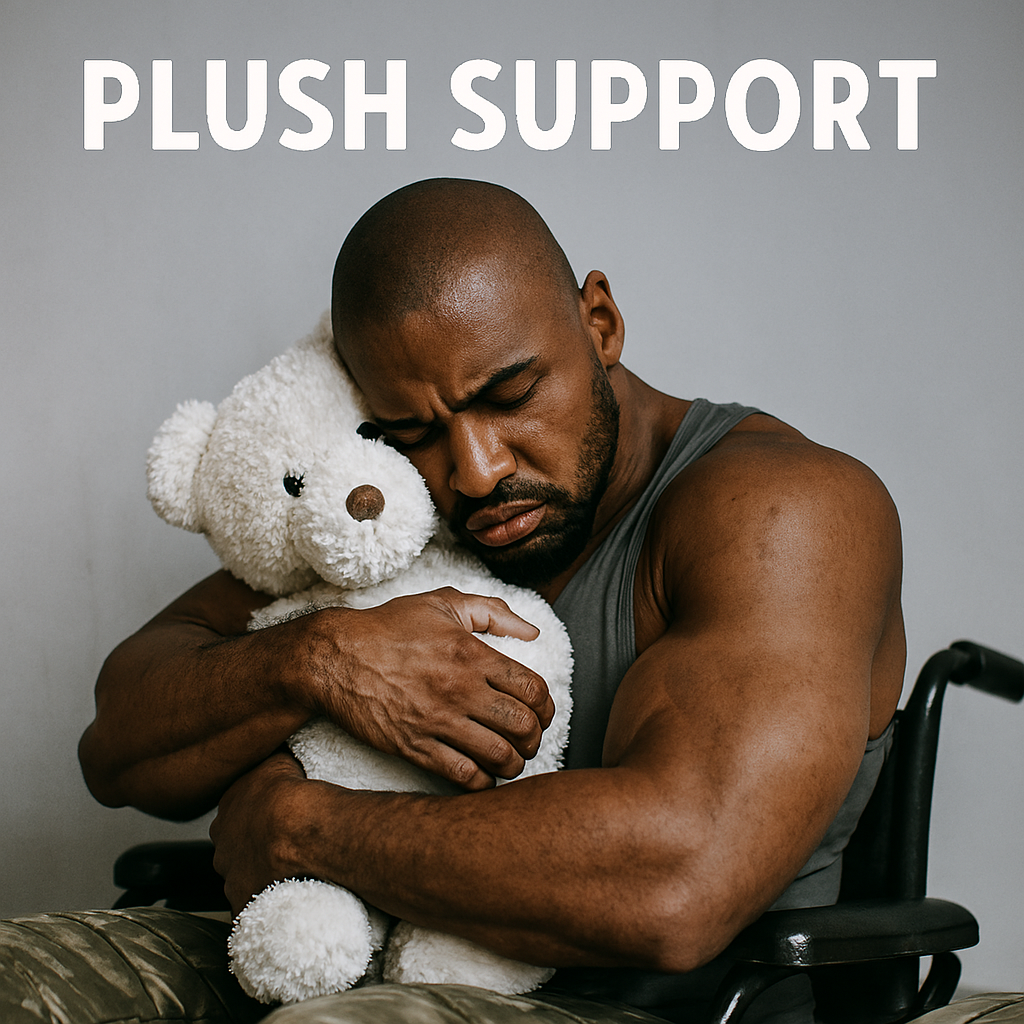
Crisis Support – Immediate Help And Long-Term Care
Mental health crises require both immediate intervention and sustained support. Children in crisis need calm, responsive adults who validate their fear and confusion. Teenagers benefit from crisis hotlines and school-based mental health services. Adults may seek emergency counseling, hospital care, or community crisis teams. Seniors require tailored crisis response that considers cognitive and physical health. Crisis support includes de-escalation, safety planning, and emotional stabilization. Long-term care involves therapy, medication, and social support systems. Gender-sensitive crisis response ensures that all individuals receive appropriate care. Crisis support must be accessible, compassionate, and culturally competent. It is a critical component of mental health infrastructure.
| Age Group | Crisis Support Type | Long-Term Care Option |
|---|---|---|
| Children | Responsive adults | Play therapy |
| Teenagers | Hotlines and school services | Counseling and peer support |
| Adults | Emergency services | Therapy and medication |
| Seniors | Tailored response teams | Community care |
| All genders | Inclusive protocols | Ongoing support systems |
Self-Care Practices – Daily Tools For Mental Wellness
Self-care is a foundational practice for all as it is maintaining mental health. Children engage in self-care through play, rest, and routine. Teenagers benefit from creative outlets, physical activity, and digital boundaries. Adults use mindfulness, hobbies, and social connection to manage stress. Seniors practice self-care through reflection, movement, and community engagement. Self-care is not indulgent but essential for emotional regulation. It includes sleep hygiene, nutrition, and time management. Gender-inclusive self-care recognizes diverse needs and preferences. They empower individuals to take ownership of their mental wellbeing.
- Supports emotional regulation
- Encourages healthy routines
- Includes sleep and nutrition
- Promotes creative expression
- Builds resilience
- Adapts to life stages
- Recognizes diverse needs
- Empowers personal agency
- Enhances mental clarity
- Valid across all genders
Therapy Access – Removing Barriers To Care
Access to therapy is a key factor in mental health outcomes. Children may receive therapy through schools or pediatric referrals. Teenagers often face stigma or logistical barriers to accessing care. Adults encounter financial, cultural, or time-related obstacles. Seniors may struggle with mobility or lack of awareness about mental health services. Therapy access must be equitable and inclusive. Teletherapy has expanded options for remote and underserved populations. Culturally competent therapists improve engagement and outcomes. Gender-inclusive therapy ensures that all identities are respected and supported. Removing barriers to care is essential for mental health equity.
| Barrier | Affected Group | Solution |
|---|---|---|
| Stigma | Teenagers | Peer education |
| Cost | Adults | Subsidized care |
| Mobility | Seniors | Home-based therapy |
| Awareness | All ages | Public campaigns |
| Gender bias | All genders | Inclusive training |
Family Support – Strengthening Emotional Bonds
Family support is a powerful influence on mental health. Children thrive in families that model emotional openness and stability. Teenagers benefit from parental guidance that respects autonomy and identity. Adults rely on family for emotional grounding and practical support. Seniors find meaning in intergenerational relationships and caregiving roles. Family support includes listening, validating, and showing consistent care. It strengthens emotional bonds and promotes resilience. Gender-inclusive family dynamics respect all identities and roles. Family therapy can address conflict and improve communication. Strong family support systems enhance mental health across the lifespan.
- Models emotional openness
- Provides stability and care
- Respects autonomy and identity
- Offers practical support
- Strengthens resilience
- Validates emotional experiences
- Promotes intergenerational connection
- Supports caregiving roles
- Enhances communication
- Inclusive of all genders
Community Engagement – Belonging And Purpose
Community engagement supports mental health by fostering belonging and purpose. Children benefit from group activities that build social skills. Teenagers find identity through clubs, activism, or creative communities. Adults engage in volunteer work, cultural events, and neighborhood networks. Seniors participate in community programs that reduce isolation and promote dignity. Engagement provides structure, meaning, and emotional connection. It combats loneliness and reinforces self-worth. Gender-inclusive communities welcome diverse participation and leadership. Community engagement is a protective factor against mental health decline. It transforms isolation into connection and passivity into purpose.
| Group | Engagement Type | Mental Health Benefit |
|---|---|---|
| Children | Group play | Builds social skills |
| Teenagers | Creative clubs | Fosters identity |
| Adults | Volunteering | Enhances purpose |
| Seniors | Community programs | Reduces isolation |
| All genders | Inclusive spaces | Promotes dignity |
Emotional Validation – Being Seen And Heard
Emotional validation is the act of acknowledging and accepting another’s feelings. Children need validation to develop trust and emotional safety. Teenagers seek validation to affirm their experiences and identities. Adults benefit from being heard without judgment or dismissal. Seniors require validation of their emotional complexity and life experiences. Validation does not mean agreement but recognition. It reduces shame and encourages open communication. Gender-inclusive validation respects diverse emotional expressions. Validation strengthens relationships and promotes healing. It is a simple yet profound tool for mental health support.
- Acknowledges emotional experience
- Builds trust and safety
- Reduces shame
- Encourages communication
- Supports identity formation
- Promotes healing
- Valid across all ages
- Inclusive of all genders
- Strengthens relationships
War Recovery – PTSD And Emotional Grounding
Emotional support plush toys have found a surprising yet powerful role in war-related trauma recovery. Veterans coping with PTSD often use plush companions as grounding tools during therapy and daily life. These objects offer tactile comfort that helps regulate emotional responses during flashbacks, nightmares, or panic episodes. Plush toys are used in trauma-informed care for both male and female veterans, providing a nonverbal source of reassurance. In military hospitals, therapists incorporate plush toys into recovery routines to foster emotional safety. Civilians affected by war, including displaced families and children, also benefit from plush toys as stabilizing companions.
Their presence can reduce hypervigilance and promote sleep in high-stress environments. Plush toys serve as symbolic anchors, reminding individuals of safety and connection. They are used in group therapy to encourage emotional openness among survivors. Across cultures, plush toys are distributed in conflict zones to support psychological resilience. Their quiet presence offers dignity and healing in the aftermath of war.
- Used by veterans for PTSD grounding
- Supports emotional regulation during flashbacks
- Integrated into trauma-informed therapy
- Helps male and female survivors reconnect with safety
- Promotes sleep in high-stress environments
- Symbolizes emotional anchors and connection
- Used in military hospitals and recovery centers
- Supports displaced civilians and children
- Encourages openness in group therapy
- Distributed in conflict zones for resilience
Disability Care – Inclusive Comfort And Emotional Support
Plush toys are increasingly recognized as therapeutic tools in disability support across all ages and genders. Individuals with physical disabilities, including wheelchair users and amputees, often use plush toys for emotional reassurance and tactile comfort. For those with cognitive or developmental disabilities, plush toys provide calming stimulation and help regulate sensory input. Therapists use plush toys to bridge communication gaps for individuals with speech or processing challenges.
In inclusive classrooms, plush toys foster emotional safety and social connection among children with disabilities. Adults with chronic conditions or neurodivergence benefit from plush toys as part of daily self-regulation routines. Plush toys are also used in hospital settings to reduce anxiety before procedures. Their design can be adapted for accessibility, including easy-to-grip shapes and weighted features. Gender-inclusive plush companions reflect diverse identities and promote emotional validation. Plush toys offer nonjudgmental presence, helping individuals feel seen and supported. Their role in disability care highlights the intersection of emotional comfort and inclusive design.
- Provides tactile comfort for physical disabilities
- Calms sensory input for cognitive challenges
- Bridges communication in therapy
- Fosters safety in inclusive classrooms
- Supports adults with chronic conditions
- Reduces anxiety in hospital settings
- Adapted for accessibility and grip
- Includes weighted features for regulation
- Reflects diverse identities and genders
- Offers nonjudgmental emotional presence
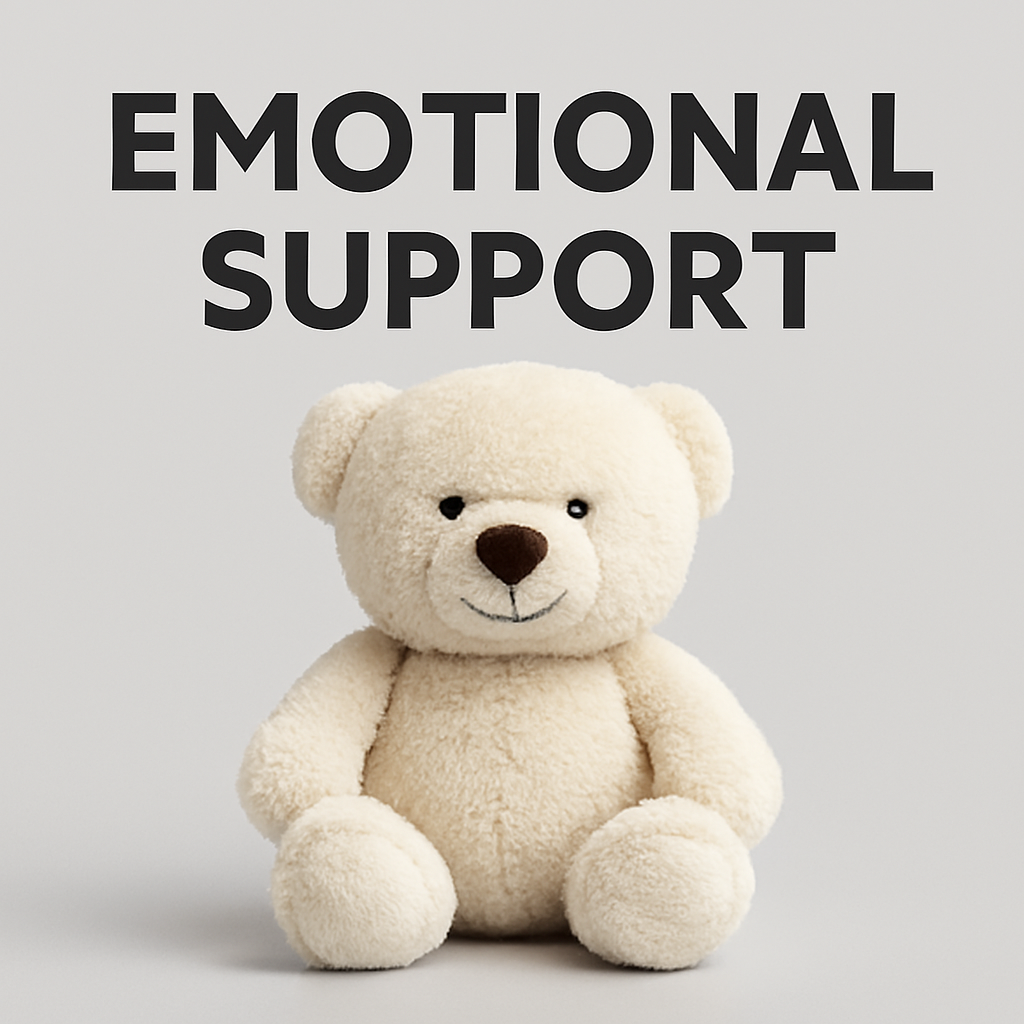
Historical Background – Origins And Evolution
Plush toys trace their origins to the late 19th century, when manufacturers began producing stuffed animals for children. The first widely recognized plush toy was the teddy bear, inspired by President Theodore Roosevelt’s hunting story. Over time, plush toys evolved from simple cotton-stuffed animals to highly detailed, realistic, and themed companions. Advances in textile technology allowed for softer fabrics and safer fillings, making them more appealing and durable.
By the mid-20th century, plush toys had become a staple in households worldwide. Their cultural significance grew as they were tied to childhood memories, gift-giving traditions, and emotional milestones. Today, plush toys are not only marketed to children but also to adults seeking comfort. The evolution reflects society’s recognition of the emotional value these objects hold. Plush toys now come in diverse forms, from animals to fantasy creatures, each designed to resonate with personal identity. Their history demonstrates a steady shift from novelty to necessity in emotional support.
| Era | Development | Cultural Impact |
|---|---|---|
| 1900s | Teddy bear invention | Symbol of childhood comfort |
| 1950s | Mass production | Household staple worldwide |
| 1980s | Character-themed plush | Connection to media and fandom |
| 2000s | Therapeutic plush | Used in counseling and therapy |
| 2020s | Adult plush trend | Stress relief and emotional regulation |
Psychological Benefits – Stress And Anxiety Relief
Plush toys provide measurable psychological benefits, particularly in reducing stress and anxiety. The act of hugging a plush toy stimulates the release of oxytocin, often referred to as the “bonding hormone.” This chemical response fosters feelings of safety and calm. Plush toys also serve as transitional objects, helping individuals cope with separation, grief, or uncertainty.
Their presence can reduce symptoms of insomnia by creating a sense of security at bedtime. For children, plush toys often become confidants, allowing them to express emotions they cannot articulate verbally. Adults benefit similarly, using plush toys as grounding tools during overwhelming moments. The tactile sensation of softness engages the parasympathetic nervous system, lowering heart rate and blood pressure. Plush toys can also reduce loneliness by providing a symbolic presence. They are nonjudgmental companions, offering unconditional comfort. In therapeutic contexts, they are used to facilitate emotional expression and healing.
- Hugging plush toys releases oxytocin
- Provides grounding during stress
- Reduces insomnia symptoms
- Acts as transitional objects
- Helps children express emotions
- Supports adults in anxiety management
- Engages parasympathetic nervous system
- Lowers heart rate and blood pressure
- Reduces loneliness
- Facilitates emotional healing in therapy
Design Features – Materials And Safety
The design of emotional support plush toys emphasizes both comfort and safety. Manufacturers select hypoallergenic fabrics to ensure suitability for sensitive skin. Modern plush toys often use polyester blends that provide softness and durability. Safety standards require secure stitching to prevent choking hazards from loose stuffing. Plush toys are tested for flammability resistance, ensuring they are safe in household environments. Weighted plush toys have gained popularity, incorporating beads or pellets to enhance grounding effects. The choice of colors and textures is deliberate, aiming to evoke calmness and familiarity.
Plush toys may include scented elements, such as lavender, to promote relaxation. Accessibility features have now been included on some cuddly toys for things such as easy-to-grip designs, make them suitable for children and or individuals with disabilities. Ethical production practices are increasingly prioritized, with sustainable materials and fair labor standards. These design considerations ensure plush toys are both emotionally supportive and physically safe.
| Feature | Purpose | Benefit |
|---|---|---|
| Hypoallergenic fabric | Prevents irritation | Safe for sensitive users |
| Secure stitching | Avoids hazards | Long-lasting durability |
| Weighted filling | Adds grounding | Enhances comfort |
| Calming colors | Visual relaxation | Reduces stress |
| Scented options | Aromatherapy | Promotes sleep |
Therapeutic Applications – Counseling And Care
Therapists often integrate plush toys into counseling sessions to support emotional expression. Children may use plush toys to role-play scenarios, revealing hidden fears or desires. Adults in therapy benefit from plush toys as grounding tools during discussions of trauma. Plush toys can serve as symbolic representations of relationships, helping clients process grief or separation. In hospital settings, plush toys provide comfort to patients undergoing stressful procedures.
They are also used in elder care, offering companionship to individuals experiencing dementia. Plush toys can reduce agitation in patients by providing tactile stimulation. Their presence in therapy rooms creates a welcoming, non-threatening environment. Counselors often recommend plush toys for at-home coping strategies. These therapeutic applications highlight the versatility of plush toys in emotional care.
- Used in counseling sessions
- Supports role-play for children
- Provides grounding for trauma discussions
- Symbolizes relationships in grief therapy
- Comforts hospital patients
- Offers companionship in elder care
- Reduces agitation in dementia patients
- Creates welcoming therapy environments
- Recommended for at-home coping
- Versatile in emotional care strategies
Social Acceptance – Adults And Plush Companions
The social acceptance of adults owning plush toys has grown significantly in recent years. Once considered childish, plush toys are now recognized as legitimate tools for emotional support. Adults openly share their experiences with plush companions on social media, normalizing the practice. Plush toys are marketed specifically to adults, emphasizing stress relief and self-care.
Workplace wellness programs sometimes include plush toys as part of relaxation strategies. The stigma surrounding adult plush ownership has diminished as mental health awareness increases. Plush toys are now seen as extensions of self-care routines, similar to meditation or journaling. They provide comfort during travel, offering familiarity in unfamiliar environments. Adults often personalize plush toys, associating them with milestones or relationships. This shift reflects broader cultural acceptance of emotional vulnerability and self-compassion.
| Trend | Description | Impact |
|---|---|---|
| Social media sharing | Adults post plush experiences | Normalizes ownership |
| Marketing to adults | Stress relief focus | Expands consumer base |
| Workplace wellness | Plush toys in relaxation | Supports employee wellbeing |
| Travel comfort | Plush toys during trips | Provides familiarity |
| Personalization | Milestone associations | Strengthens emotional bonds |
Enduring Companionship
Emotional support plush toys embody the intersection of comfort, psychology, and cultural acceptance. They are more than simple objects, serving as companions that foster resilience and emotional stability. Their history demonstrates a steady evolution from novelty to therapeutic necessity. Psychological benefits, design features, and therapeutic applications highlight their multifaceted role. Adults and children alike find solace in their presence, reinforcing their universal appeal.
Plush toys adapt to diverse needs, from hospital care to workplace wellness. Their acceptance reflects society’s growing recognition of emotional vulnerability as strength. In uncertain times, plush toys remain steadfast allies in promoting mental health. They represent a timeless form of companionship, bridging generations and cultures. The enduring relevance of plush toys underscores their importance in emotional support.
Cultural Symbolism – Meaning And Identity
Plush toys often carry symbolic meaning that extends beyond their physical form. They can represent cherished memories, such as childhood milestones or gifts from loved ones. Many individuals assign identities to their plush companions, treating them as symbolic friends. Their symbolism evolves with age, shifting from playful objects to emotional anchors. Plush toys can also reflect personal identity, chosen to mirror traits or aspirations. Collectors often view plush toys as cultural artifacts, preserving them as symbols of generational trends. The emotional resonance of plush toys lies in their ability to embody intangible feelings. They are not just objects but carriers of meaning that enrich personal and cultural identity.
| Symbolic Role | Description | Emotional Impact |
|---|---|---|
| Childhood memory | Gift or milestone | Nostalgia and comfort |
| Protective charm | Used in traditions | Reduces fear |
| Identity mirror | Reflects traits | Strengthens self-image |
| Cultural artifact | Preserved by collectors | Connects generations |
| Emotional anchor | Provides stability | Enhances resilience |
Accessibility Value – Inclusive Design And Use
Emotional support plush toys are increasingly designed with inclusivity in mind. Manufacturers consider accessibility features to ensure they benefit people of all abilities. Plush toys with easy-to-grip shapes support individuals with limited motor skills. Weighted plush toys provide grounding for those with sensory processing challenges. Textured fabrics are used to stimulate tactile engagement for therapy purposes. Plush toys can be adapted with removable covers for hygiene in medical settings. Their portability makes them accessible companions in diverse environments. Inclusive design ensures that plush toys are not limited to children but serve adults with disabilities as well. They are often recommended in occupational therapy to support emotional regulation. By prioritizing accessibility, plush toys become universal tools for comfort and care.
- Easy-to-grip shapes for limited motor skills
- Weighted designs for sensory grounding
- Textured fabrics for tactile therapy
- Removable covers for hygiene
- Portable for diverse environments
- Suitable for adults with disabilities
- Recommended in occupational therapy
- Supports emotional regulation
- Inclusive design principles applied
- Universal comfort tools
Market Trends – Consumer Demand And Innovation
The market for emotional support plush toys has expanded rapidly in recent years. Consumer demand reflects growing awareness of mental health and self-care. Plush toys are now marketed across age groups, emphasizing their therapeutic value. Innovations include weighted designs, scented fabrics, and customizable features. Online platforms have amplified visibility, with communities sharing plush experiences. Limited-edition plush toys attract collectors, blending emotional value with exclusivity. Companies highlight sustainability, using recycled materials to appeal to eco-conscious consumers. Plush toys are also integrated into wellness products, such as sleep kits and relaxation bundles. The market reflects a balance between emotional need and commercial creativity. This trend demonstrates how plush toys have become both personal companions and cultural commodities.
| Trend | Innovation | Consumer Appeal |
|---|---|---|
| Weighted plush | Added grounding | Stress relief |
| Scented fabrics | Aromatherapy | Sleep support |
| Customizable features | Personal identity | Emotional connection |
| Limited editions | Collector value | Exclusivity |
| Sustainable materials | Eco-conscious design | Ethical appeal |
Emotional Expression – Communication And Connection
Plush toys often serve as tools for emotional expression. Children use them to communicate feelings they cannot verbalize. Adults may project emotions onto plush companions, finding comfort in symbolic dialogue. Plush toys can act as mediators in therapy, helping individuals articulate complex emotions. They provide a safe outlet for expressing vulnerability without judgment. Plush toys are often used in storytelling, allowing individuals to externalize inner experiences. Their presence can foster connection between people, as shared plush experiences create bonds. Plush toys can also symbolize relationships, representing loved ones or memories. Emotional expression through plush toys is both personal and relational. They stand as silent listeners, absorbing emotions and offering comfort in return.
- Helps children communicate feelings
- Provides symbolic dialogue for adults
- Acts as mediator in therapy
- Safe outlet for vulnerability
- Used in storytelling exercises
- Fosters connection between people
- Symbolizes relationships and memories
- Encourages emotional articulation
- Serves as silent listener
- Offers comfort through presence
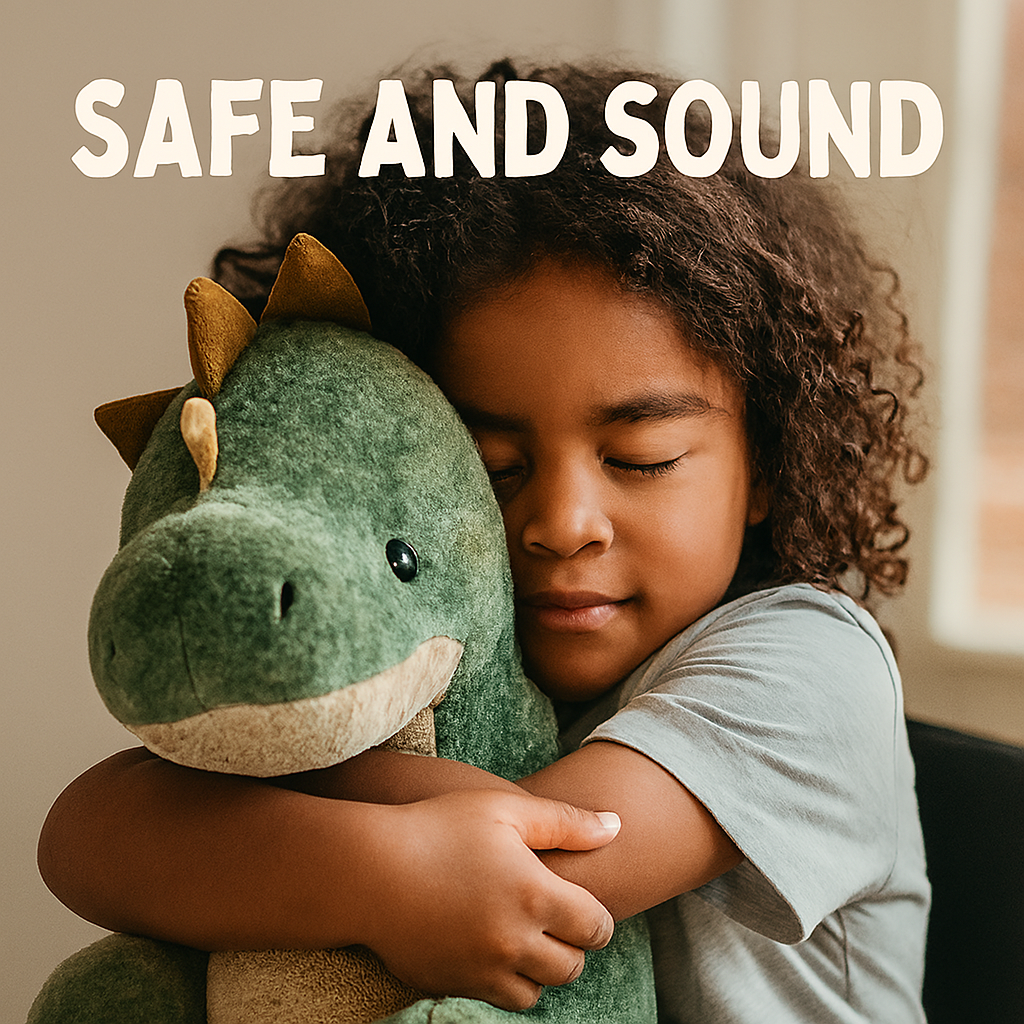
Generational Appeal – Across Ages And Lifespans
Plush toys appeal to individuals across generations, from children to seniors. For children, they are playmates and sources of security. Teenagers often use plush toys as decorative items with emotional significance. Adults embrace plush toys for stress relief and companionship. Seniors find comfort in plush toys, especially in care settings. Their appeal lies in a strange connection that builds their adaptability to different life stages. Plush toys can symbolize continuity, connecting childhood memories with adult experiences. They serve as intergenerational gifts, passed down as tokens of love. Families often share plush traditions, reinforcing bonds across ages. This generational appeal underscores their timeless relevance in emotional support.
| Age Group | Role | Emotional Value |
|---|---|---|
| Children | Playmate and security | Comfort and safety |
| Teenagers | Decorative companion | Identity and expression |
| Adults | Stress relief | Grounding and resilience |
| Seniors | Care setting comfort | Companionship |
| Families | Intergenerational gifts | Bond reinforcement |
Symbolic Healing – Recovery And Resilience
Plush toys are often used as symbols of healing during recovery. Patients recovering from illness may find comfort in plush companions. Plush toys can represent resilience, reminding individuals of their strength. They are used in rehabilitation programs to provide emotional support. Survivors of trauma often keep plush toys as grounding tools. Plush toys can symbolize hope, offering reassurance during difficult times. Their presence in recovery spaces creates a calming environment. Plush toys are sometimes gifted to mark milestones in healing journeys. They embody the idea that recovery is not only physical but emotional. Symbolic healing through plush toys reinforces resilience and emotional growth.
- Comfort during illness recovery
- Symbol of resilience and strength
- Used in rehabilitation programs
- Grounding tool for trauma survivors
- Symbolizes hope in difficult times
- Creates calming recovery environments
- Gifted for healing milestones
- Represents emotional recovery
- Encourages resilience
- Supports emotional growth
Educational Role – Learning And Development
Plush toys play an important role in education and child development. Teachers often use plush companions as tools to encourage participation in classrooms. They can serve as mascots for lessons, helping children engage with abstract concepts. Plush toys are used in language learning, where children practice communication through role-play. They also support social-emotional learning by teaching empathy and care.
In early childhood education, plush toys provide comfort during transitions between activities. They can be incorporated into storytelling, making narratives more interactive and memorable. Plush toys help children develop responsibility by caring for them as symbolic pets. Their presence in classrooms fosters inclusivity, ensuring all children feel supported. Educational use of plush toys demonstrates their versatility beyond play, reinforcing their value in learning environments.
| Educational Use | Description | Benefit |
|---|---|---|
| Classroom mascots | Lesson companions | Encourages participation |
| Language learning | Role-play practice | Improves communication |
| Social-emotional learning | Teaches empathy | Builds emotional skills |
| Storytelling | Interactive narratives | Enhances memory |
| Responsibility training | Symbolic pet care | Develops accountability |
Travel Comfort – Familiarity And Security
Plush toys provide comfort during travel, offering familiarity in unfamiliar environments. Children often carry plush companions on trips to reduce anxiety. Adults also use plush toys to ease stress during flights or long journeys. Plush toys act as grounding objects, helping individuals feel secure in new places. Their portability makes them ideal travel companions. Plush toys can symbolize home, reminding travelers of loved ones and stability. They are often used to help children sleep in hotels or temporary accommodations. Plush toys reduce feelings of isolation during solo travel. Their presence can transform stressful journeys into manageable experiences. Travel comfort highlights the universal role of plush toys in providing emotional support.
- Provides familiarity during travel
- Reduces anxiety in children
- Eases stress for adults
- Acts as grounding object
- Portable and convenient
- Symbolizes home and stability
- Supports sleep in temporary spaces
- Reduces isolation in solo travel
- Makes journeys manageable
- Universal travel companion
Gift Value – Symbolism And Celebration
Plush toys hold significant value as gifts, symbolizing care and celebration. They are commonly given during birthdays, holidays, and milestones. Plush toys represent affection, making them meaningful tokens of love. Their versatility allows them to suit recipients of all ages. Plush toys are personal identities that can be personalized, adding emotional structure to the gift. They are often used to commemorate achievements, such as graduations or recoveries. Plush toys serve as lasting reminders of special occasions. Their symbolic value lies in their ability to convey emotions without words. Gift-giving traditions highlight plush toys as timeless expressions of connection.
| Occasion | Role | Emotional Value |
|---|---|---|
| Birthdays | Celebration gift | Symbol of joy |
| Holidays | Seasonal present | Family connection |
| Milestones | Achievement marker | Encouragement |
| Recoveries | Healing support | Comfort and hope |
| Personalization | Customized gift | Emotional depth |
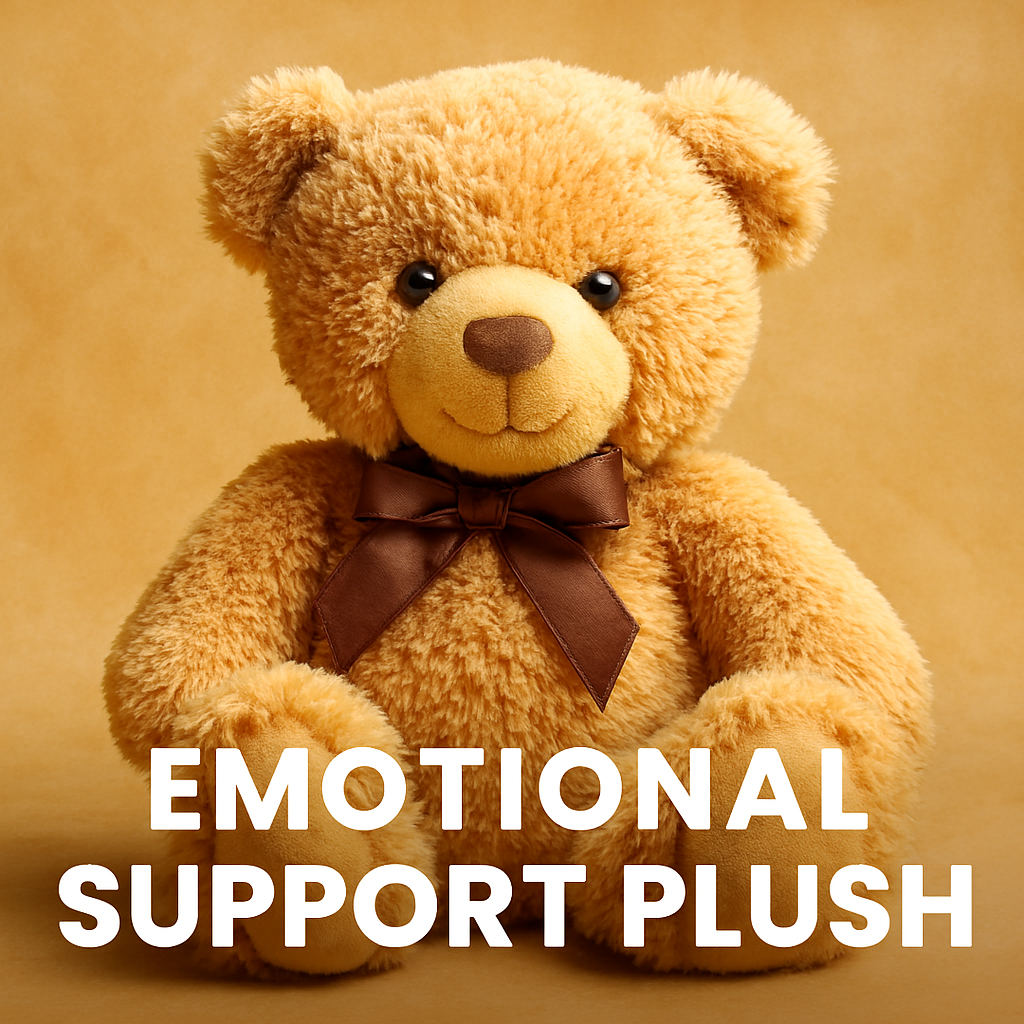
Workplace Wellness – Stress And Productivity
Plush toys are increasingly acceptable in workplace wellness programs and everyday life. They provide stress relief during demanding tasks. Employees use plush toys as grounding tools in high-pressure environments. Plush toys can be included in relaxation spaces, promoting mental health at work. Their presence encourages breaks, reducing burnout. Plush toys symbolize self-care, reminding employees to prioritize wellbeing. They can foster creativity by providing playful inspiration. Plush toys also support inclusivity, creating welcoming environments for diverse employees. Workplace wellness initiatives highlight plush toys as practical tools for productivity. Their role demonstrates how emotional support extends into professional settings.
- Provides stress relief at work
- Acts as grounding tool in pressure
- Included in relaxation spaces
- Encourages breaks to reduce burnout
- Symbolizes self-care
- Inspires creativity
- Supports inclusivity
- Creates welcoming environments
- Practical productivity tool
- Extends emotional support to workplaces
Sustainability Focus – Eco-Friendly Production
Sustainability has become a priority in plush toy production. Manufacturers increasingly use recycled fabrics and fillings. Eco-friendly dyes reduce environmental impact. Plush toys are designed for durability, minimizing waste. Companies emphasize ethical labor practices in production. Sustainable plush toys appeal to eco-conscious consumers. They symbolize care not only for individuals but for the planet. Plush toys can be part of broader sustainability campaigns. Their eco-friendly design enhances their emotional value. Sustainability ensures plush toys remain relevant in modern ethical markets.
| Sustainable Feature | Description | Benefit |
|---|---|---|
| Recycled fabrics | Reused materials | Reduces waste |
| Eco-friendly dyes | Non-toxic coloring | Protects environment |
| Durable design | Long-lasting use | Minimizes disposal |
| Ethical labor | Fair practices | Supports workers |
| Eco-conscious appeal | Market trend | Aligns with values |
Artistic Expression – Creativity And Design
Plush toys are also mediums of artistic expression. Designers create unique plush companions that reflect creativity and imagination. Plush toys can be customized to represent personal stories. Artists use plush toys to explore themes of identity and emotion. Plush designs often incorporate cultural motifs, celebrating heritage. Limited-edition plush toys are valued as collectible art pieces. Plush toys can be displayed as part of artistic installations. Their design process blends functionality with aesthetics. Artistic expression through plush toys highlights their cultural significance. They embody creativity while maintaining emotional support.
- Reflects creativity and imagination
- Customizable for personal stories
- Explores identity and emotion
- Incorporates cultural motifs
- Celebrates heritage
- Valued as collectible art pieces
- Displayed in installations
- Blends functionality with aesthetics
- Highlights cultural significance
- Embodies creativity and support
Digital Integration – Technology And Connection
Plush toys are increasingly integrated with digital technology. Smart plush companions include sensors that respond to touch. Some plush toys connect to apps, offering interactive experiences. Digital integration allows plush toys to record or play comforting sounds. Plush toys can be used in virtual therapy sessions. They bridge physical comfort with digital connection. Smart plush toys appeal to tech-savvy consumers. Their interactive features enhance emotional engagement. Digital integration expands the role of plush toys in modern life. They represent the fusion of tradition and innovation.
| Digital Feature | Description | Benefit |
|---|---|---|
| Touch sensors | Respond to interaction | Enhances engagement |
| App connection | Interactive play | Expands functionality |
| Sound recording | Comforting playback | Emotional reassurance |
| Virtual therapy | Digital support | Accessible care |
| Tech appeal | Modern design | Attracts consumers |
Global Perspective – Cultural Diversity And Use
Plush toys hold diverse meanings across cultures worldwide. In Japan, plush toys are linked to kawaii culture, symbolizing cuteness and comfort. In Europe, plush toys are often tied to childhood traditions and family heritage. In North America, plush toys are marketed as therapeutic companions for all ages. In Africa, handmade plush toys reflect local craftsmanship and cultural identity. Latin American cultures use plush toys in celebrations and symbolic rituals. These diverse uses highlight the universal appeal of plush companions. Plush toys adapt to cultural contexts while maintaining emotional support. Their global perspective underscores their timeless relevance. Cultural diversity enriches their role as emotional anchors.
- Japan – Kawaii culture and comfort
- Europe – Childhood traditions and heritage
- North America – Therapeutic companions
- Africa – Handmade craftsmanship and identity
- Latin America – Celebrations and rituals
- Universal appeal across cultures
- Adaptable to diverse contexts
- Maintains emotional support globally
- Timeless relevance worldwide
- Enriched by cultural diversity
Conclusion – Enduring Companionship
Emotional support plush toys embody the intersection of comfort, psychology, and cultural acceptance. They are more than simple objects, serving as companions that foster resilience and emotional stability. Their history demonstrates a steady evolution from novelty to therapeutic necessity. Psychological benefits, design features, and therapeutic applications highlight their multifaceted role.
Adults and children alike find solace in their presence, reinforcing their universal appeal. Plush toys adapt to diverse needs, from hospital care to workplace wellness. Their acceptance reflects society’s growing recognition of emotional vulnerability as strength. In uncertain times, plush toys remain steadfast allies in promoting mental health. They represent a timeless form of companionship, bridging generations and cultures. The enduring relevance of plush toys underscores their importance in emotional support.
Join The Discussion – Share Your Experience
Have you ever relied on a plush toy for comfort during stressful times. Your perspective can inspire others to embrace emotional support in simple, accessible ways.



